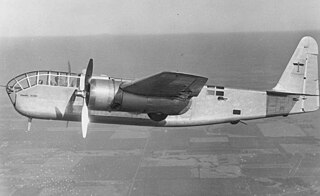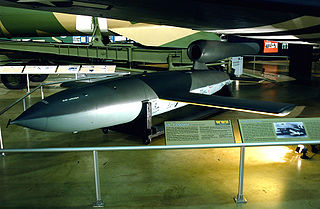
Eglin Air Force Base (AFB) is a United States Air Force base in western Florida, located about three miles (5 km) southwest of Valparaiso in Okaloosa County.

Hurlburt Field is a United States Air Force installation located in Okaloosa County, Florida, immediately west of the Town of Mary Esther. It is part of the greater Eglin Air Force Base reservation, and is home to Headquarters Air Force Special Operations Command (AFSOC), the 1st Special Operations Wing (1 SOW), the USAF Special Operations School (USAFSOS) and the Air Combat Command's (ACC) 505th Command and Control Wing. It was named for First Lieutenant Donald Wilson Hurlburt, who died in a crash at Eglin. The installation is nearly 6,700 acres (27 km2), and employs nearly 8,000 military personnel.

Holloman Air Force Base is a United States Air Force base established in 1942 located six miles (10 km) southwest of the central business district of Alamogordo, and a census-designated place in Otero County, New Mexico, United States. The base was named in honor of Col. George V. Holloman, a pioneer in guided missile research. It is the home of the 49th Wing of the Air Education and Training Command (AETC).

The Air Force Test Center (AFTC) is a development and test organization of the United States Air Force. It conducts research, development, test, and evaluation of aerospace systems from concept to deployment. It has test flown every aircraft in the Army Air Force's and the Air Force's inventory since World War II. The center employs nearly 13,000 people and controls the second largest base in the Air Force.
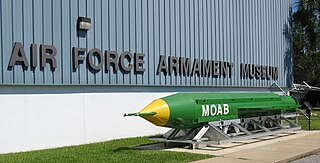
The Air Force Armament Museum, adjacent to Eglin Air Force Base, Florida, is the only facility in the U.S. dedicated to the display of Air Force armament. Founded in 1975, it was originally located in a converted gymnasium on the northeastern edge of the Eglin main base, adjacent to Valparaiso, Florida.

The 308th Armament Systems Wing is an inactive United States Air Force unit. It was last assigned to the Air Armament Center, stationed at Eglin AFB, Florida. It was inactivated on 30 July 2010.

The 33d Fighter Wing is a United States Air Force unit assigned to Air Education and Training Command's Nineteenth Air Force. It is stationed at Eglin Air Force Base, Florida where it is a tenant unit.

The 328th Armament Systems Wing is an inactive wing of the United States Air Force (USAF). It was last active in 2007, assigned to the Air Armament Center, part of Air Force Material Command (AFMC) at Eglin Air Force Base, Florida. It was first activated in 1942 as the 328th Fighter Group and served during World War II as a fighter aircraft training unit until disbanded in 1944 in a major reorganization of the Army Air Forces.
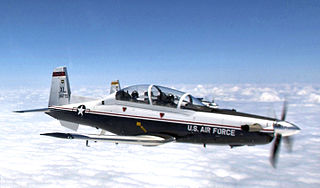
The 84th Flying Training Squadron is part of the United States Air Force 47th Flying Training Wing based at Laughlin Air Force Base, Texas. It operates Beechcraft T-6 Texan II aircraft conducting flight training.

In March 1946, the Army Air Forces Center was redesignated Army Air Forces Proving Ground Command, adding the responsibilities of a similarly named organization in June, when it moved to Eglin Field, Florida. It became the Army Air Forces' primary testing command until 1957, when it was redesignated the Air Proving Ground Center and assigned to Air Research and Development Command (ARDC). After its transfer, it continued its mission under ARDC command and supervision.

The 568th Air Defense Group is a disbanded United States Air Force organization. Its last assignment was with Air Defense Command (ADC)'s 4709th Air Defense Wing at McGuire Air Force Base, New Jersey, where it was inactivated in 1954. The group was originally activated as a support unit for a combat group at the end of World War II on Guam, but was soon inactivated.
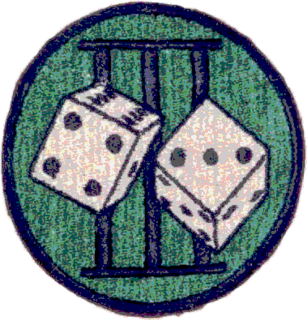
The 307th Air Refueling Squadron is an inactive United States Air Force unit. It was last assigned to the 410th Bombardment Wing, stationed at K.I. Sawyer AFB, Michigan. It was inactivated on 1 August 1990.
The 301st Bombardment Squadron is an inactive United States Air Force unit. It was last assigned to the 4135th Strategic Wing. It was inactivated at Eglin Air Force Base, Florida on 1 February 1963.

Bangor Air National Guard Base is a United States Air National Guard base. Created in 1927 as the commercial Godfrey Field, the airfield was taken over by the U.S. Army just before World War II and renamed Godfrey Army Airfield and later Dow Army Airfield. It became Dow Air Force Base in 1947, when the newly formed U.S. Air Force took over many Army air assets. In 1968, the base was sold to the city of Bangor, Maine, to become Bangor International Airport but has since continued to host Maine Air National Guard units under a lease agreement with the city.

The 550th Guided Missiles Wing is an inactive United States Air Force unit. It was last assigned to the Long Range Proving Ground Division at Patrick Air Force Base, Florida. It was inactivated on 30 December 1950. From 1949 through 1950 it was the Air Force's only experimental missile unit.
Eglin Air Force Base, a United States Air Force base located southwest of Valparaiso, Florida, was established in 1935 as the Valparaiso Bombing and Gunnery Base. It is named in honor of Lieutenant Colonel Frederick I. Eglin (1891–1937), who was killed in a crash of his Northrop A-17 pursuit aircraft on a flight from Langley to Maxwell Field, Alabama.

The 3205th Drone Group is a discontinued United States Air Force unit. It was last active with the Air Proving Ground Center, based at Eglin Air Force Base, Florida, where it was discontinued on 1 February 1961.
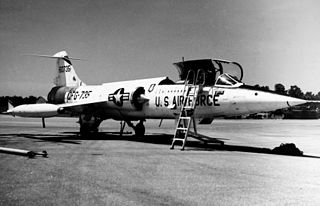
The 3205th Drone Squadron is a discontinued United States Air Force unit. It was last active with the Air Proving Ground Center based at Eglin Air Force Base, Florida, where it was discontinued on 25 October 1963. The squadron operated various drones between 1950 and 1963 to provide targets to support development of weapons and for interceptor training.

The 96th Test Wing is a United States Air Force unit assigned to the Air Force Test Center of Air Force Materiel Command at Eglin Air Force Base, Florida. The wing was activated at Eglin in 1994 as the 96th Air Base Wing, the headquarters for all support units on Eglin, the largest installation in the Air Force. In 2012, it absorbed the mission and resources of the 46th Test Wing and added the mission of testing and evaluating weapons, navigation and guidance systems and command and control systems.




